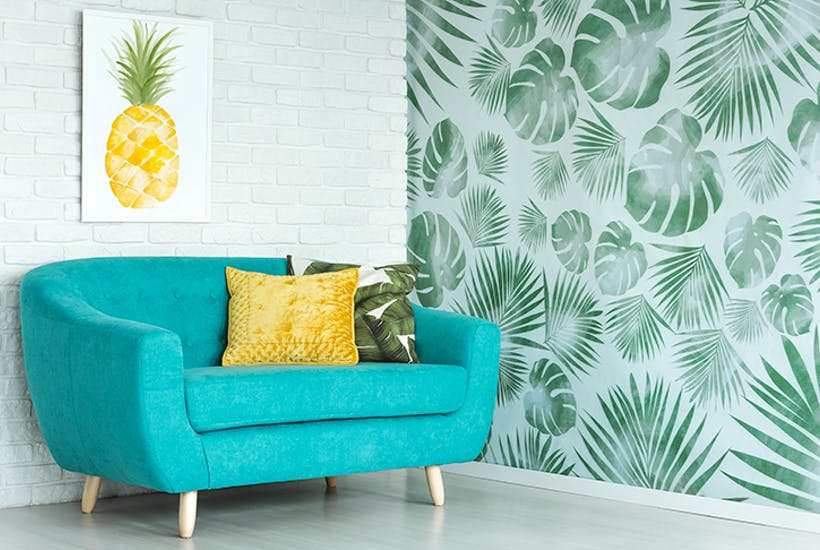This article is in
The Spectator’s November 2019 US edition. Subscribe here.
Quick! Roll up the Persian carpet. Hide the willow-pattern service. Sweep the wok and chopsticks under the Berber rug. Mr and Mx Virtue-Signaler from number 12 are on their way over. How woke is your house? If your impeccably enlightened neighbor ran a finger along the mantelpiece, would you pass the cultural appropriation test?
First it was yoga classes. Then costume parties. Don’t go near Party City until you’ve consulted one of many online guides advising party-goers ‘how not to dress like an offensive idiot’. Tread carefully with turbans, kimonos, cheongsams, saris, bindis and Native American headdresses. Dare to wear a sombrero? On your own head be it. We’ve had cultural storms in imported chai pots over sushi, bánh mì, jerk chicken and a grocery chain’s sweet potato biryani wrap.
Now it’s our living rooms. The US website Apartment Therapy published an article asking us to face up to ‘a harsh truth: in design, cultural appropriation is happening on a widespread scale. And pretty much all of us are culpable.’

I’m guilty as hell. Here in my London apartment I have sake cups, hammam towels, mock-Moroccan bathroom tiles…the sake cups are OK, apparently, because we bought them from a handicrafts shop in Tokyo. The tiles are doubtful, if not downright reprehensible, because they came from a depot in the middle of England.
It’s all rather tricky. Following the principles of feng shui is acceptable, but according to one associate professor of contemporary hand-wringing: ‘Filling your space with random Buddha statues, silk fans and a qipao is a complete disconnection from feng shui. Unless you are rooted in Chinese cultural heritage or are a practicing Buddhist, the aesthetics of the space will not match or contextually make sense.’
The article is noticeably silent on more troublesome items — African masks, ceremonial spears, artifacts used in prayer and religious ritual — which might actually cause offense, while condemning such soft targets as pineapples: ‘Anyone trying to incorporate another culture should ask themselves some big questions when, say, adding that Hawaiian pineapple into a design.’
Why not go the whole hog — sorry, the whole tofu sausage — and ban images of any exotic fruit or foliage? So no tropical prints — bananas, palm leaves, bamboo — and no novelty ice buckets in the shape of water melons or coconuts. I once interviewed a London designer who printed her wallpaper patterns using the cut side of a potato. Well, that’s definitely dodgy. Potatoes are plunder from the New World. Repatriate the potato!
The article doesn’t mention, but perhaps it goes without saying, that animalia is out. No zebra-skin rugs, no leopard-print sofas, no taxidermy, no hunting trophies. No antlers, tusks, peacock feathers or elephant-foot umbrella stands. Definitely no still-life paintings of gamey carnage. No novelty needlepoint cushions of foxes in hunting jackets. No fishing flies in glass-fronted cases. No leather-topped bureaus. No woolen throws or sheepskin mats.
The wool thing is strange. A recent article in a Sunday newspaper about ‘the vegan home’ squirmed over the ethics of wool and cashmere. I’ve seen sheep sheared. Off they pop, a little chilly and abashed, as if they’ve just had their trousers pulled down in the playground, but otherwise unharmed.
Beware, too, the bear-traps of fabric and pattern: ikats, batiks, kilims, paisleys and, unless you’re doing up a home in Scotland, tartans. Avoid exotica and think twice before you tiki the kitchen. Do not ‘shop the world’. I am reminded of the diplomatic joke that you can tell a woman’s first posting by her crockery and a man’s first posting by his wife.
I am reaching the limits of my liberal guilt. Every month I feel more and more like a monster for the way I eat, shop, dress and travel. My new strategy is this: better belligerence than letting the bastards grind you down. When Prince Harry and Meghan Markle, the Duke and Duchess of Sussex, announced they were having no more than two children for the sake of the planet, I told my husband: ‘Right, that’s it, we’re having four.’ The first thing I did after reading the ‘When a rug isn’t just a rug: the hidden context behind popular home decor’ article was to Google pineapple door knockers. (My husband is keener on the knockers.)
Call for unity, call for diversity, call for inclusivity, courtesy, kindness, consideration and better conversations. But leave us alone in our homes and keep your judgmental hands off my Japanese tea bowls.
This article is in The Spectator’s November 2019 US edition. Subscribe here.


















